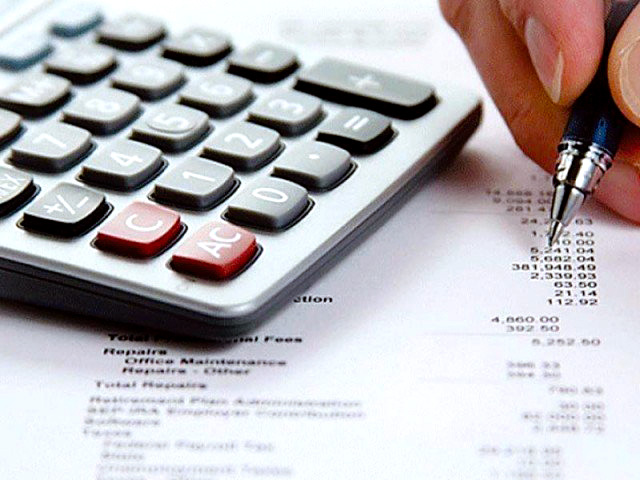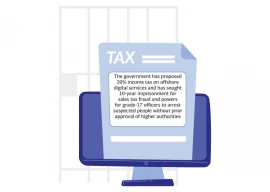
The Federal Board of Revenue’s (FBR) tax collection target for next fiscal year is projected to be nearly Rs6 trillion that the government will try to achieve by increasing rates of income and sales tax and withdrawing exemptions, confirms a new International Monetary Fund (IMF) report.
The tax burden of salaried class will mount and the cost of consumer goods will also go up due to withdrawal of sales tax exemptions with effect from July.
The target of petroleum levy is shown at Rs607 billion for fiscal year 2021-22, according to the report that the global lender released two weeks after its board revived Pakistan’s $6 billion loan programme.
For this fiscal year, the petroleum levy target is Rs450 billion, but the IMF report has projected the collection at Rs511 billion on the back of higher petroleum product prices.
The report suggests FBR’s tax collection target at Rs5.963 trillion - higher by Rs1.3 trillion or 27% over current year’s downward revised tax collection target.
The report also confirms that the Pakistan Tehreek-e-Insaf (PTI) government will not be able to achieve its tax collection target for the third year too and the collection for this year is projected at less than Rs4.7 trillion.
“The programme requires significant revenue efforts from the beginning, as there is little room on the expenditure side,” said IMF Mission Chief to Pakistan Ernesto Rigo while responding to a question through video link.
“Pakistan’s peace budget has increased by 80% since the beginning of the IMF programme,” said Rigo.
Overall size of the next budget is estimated to be around Rs7.7 trillion, including debt servicing cost of nearly Rs3.1 trillion.
Development budget spending is shown at only Rs627 billion for the next fiscal year, which is almost equal to the petroleum levy target.
However, over half of next year’s tax collection will go to servicing the existing pile of public debt, which will leave little money for productive purposes.
“We remain committed to broadening the tax base and gradually increasing the taxto-GDP ratio by more than 3% of GDP through FY 2023, with a cumulative fiscal primary adjustment of 3.3% of GDP,” states the Memorandum of Economic and Financial Policies (MEFP).
MEFP is the policy document that the finance minister and the SBP governor submit to the IMF before the board meeting, making commitments in return for loans.
MEFP underlined that in the next step, the government would change both general sales tax (GST) and personal income tax rates with the fiscal year 2021-22 budget, yielding an estimated 1.1% of GDP or Rs570 billion.
The tax measures on account of federal excise duty and customs duties are expected to be over and above these measures, which will bring the total burden of additional taxes to around Rs700 billion, according to the FBR sources.
The government has informed the IMF that it “will eliminate all zero-rated goods, currently protected under fifth schedule, except on export and capital machinery goods and move them to the standard sales tax rate. It will remove reduced rates under the Eight Schedule and bring all those goods to the standard sales tax rate”.
Similarly, it will “eliminate exemptions (Sixth Schedule) excluding a small subset of goods (ie, basic food, medicines, live animals for human consumption, education and health-related goods) and bring all others to the standard rate” of 17%.
The report showed that the government will also “remove the Ninth Schedule to replace a specific tax rate for cell phones with the standard rate” of 17%.
The report showed that these changes in the GST law are expected to yield an estimated 0.7% of GDP or Rs390 billion on an annualised basis.
There will also be significant changes in the income tax rates by reducing the number of tax slabs, confirms the report.
“In line with IMF recommendations, we will seek to change the existing tax rate structure by reducing the number of rates and income tax brackets from eleven to five and decreasing the size of the income slabs,” according to the MEFP.
Pakistani authorities told the IMF that this will simplify the system and increase progressivity; reduce tax credits and allowances by 50% (except for Zakat and those provided for disabled and senior citizens).
The income tax rates and slabs changes will yield additional revenue equal to 0.4% of GDP or Rs208 billion, according to the report.
The government will also introduce a special tax procedures for very small taxpayers aimed at preventing further tax base erosion and facilitating the formalisation of the economy; and adopt a longterm strategy to reduce labour informality and to bring additional taxpayers into the personal income tax net.
The IMF report noted that Pakistan has to increase its revenues and ensure fiscal consolidation to contain the public debt that it projected at colossal 93% of GDP by June this year.


1737532984-0/BeFunky-collage-(18)1737532984-0-165x106.webp)

1737533714-0/fizza-(78)1737533714-0-165x106.webp)










1737452260-0/Gaddafi-stadium-(2)1737452260-0-270x192.webp)










COMMENTS
Comments are moderated and generally will be posted if they are on-topic and not abusive.
For more information, please see our Comments FAQ